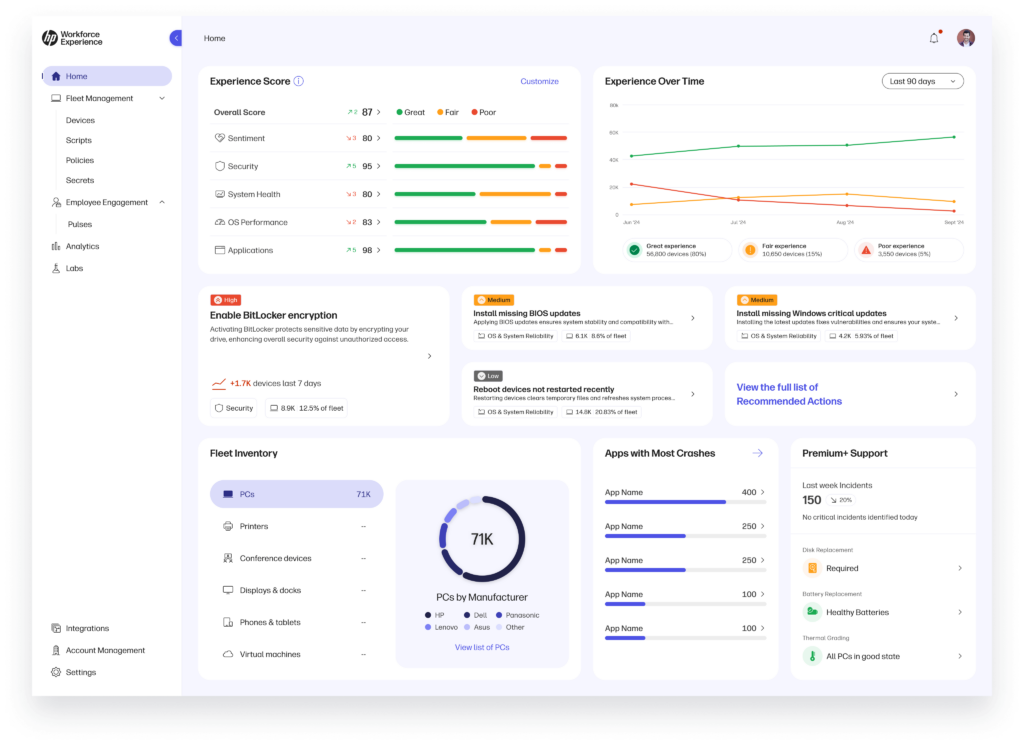Virtualize Desktops with DaaS
IT experts share how DaaS enables remote access, streamlines seasonal onboarding, and empowers hybrid flexibility.
As workforce demands shift, more organizations are turning to desktop as a service (DaaS) to enhance agility, reduce infrastructure overhead, and empower hybrid teams. With cloud-based provisioning and centralized management, DaaS technology simplifies deployment while enabling remote and secure access to critical applications and resources. Below, three IT experts share insights on how virtual desktop as a service technology is solving common enterprise challenges.
Virtual DaaS supports remote hardware and software access
For teams managing compute-heavy workloads or a distributed workforce, DaaS offers flexible access to high-performance resources without the limitations of physical infrastructure. According to a 2020 Spiceworks report, 58% of ITDMs use desktop virtualization to make more efficient use of computing resources, with many leveraging it to support remote operations and reduce endpoint burden.
"If you want to do creative design or AI workloads, you can access a full physical workstation. Or you can access a virtualized desktop running vSphere. Or you can access a cloud desktop in Azure or AWS. That's the value we're seeing out there today and what we're making really easy to use."
Ziad Lammam
Head of Product for HP AnywareSource: BrightTalk
This shift in DaaS technology gives IT teams the ability to deliver consistent, high-performance desktop experiences across various endpoints. Whether for AI modeling or 3D rendering, cloud workstations accessed through a DaaS cloud model help reduce latency and ensure user productivity no matter the device or location.
Desktop as a service reduces seasonal worker overhead
Companies with seasonal staff cycles often struggle with provisioning short-term hardware while maintaining security and compliance. Desktop as a service solves this by offering on-demand virtual desktops that can be easily configured and decommissioned. In fact, over half of tech leaders transition to desktop as a service because their IT teams lack the expertise to maintain traditional VDI infrastructure, according to Gartner.
"Seasonal workers need computers for two or three months a year. Is it a good idea to buy two rooms full of laptops that you’re going to ship out to them and then get back, and have to update the anti-virus and re-join them all to the Active Directory because they’re expired, or have VDI infrastructure that’s in use for two months of the year but that you have to depreciate the whole time?”
Mark Lockwood
Managing Vice President @ GartnerSource: CIO.com
With virtual desktop as a service, organizations can deploy desktops in hours instead of weeks and avoid the logistical and financial burden of device procurement. DaaS enables faster onboarding, easier compliance, and lower total cost of ownership. This is particularly valuable for sectors like retail, education, and customer support that rely on temporary workforce surges.
The modern DaaS cloud supports hybrid use cases
Today’s DaaS cloud platforms are evolving beyond traditional use cases to support hybrid and multi-cloud strategies. Organizations are blending on-premise and cloud-hosted environments to align with user needs and compliance requirements. Notably, 39% of ITDMs use application virtualization and 32% use virtual desktop infrastructure (VDI) technology, signaling a shift toward hybrid delivery models.
"It doesn’t necessarily have to take the shape of the desktop virtualization of the past. Now we’re seeing hybrid desktop and app virtualization platforms as well. Not just desktop-as-a-service, not just on-prem, but actually a hybrid combination of the two of them. Plus, a renewed sense of importance for employee experience."
Gabe Knuth
Principal Analyst @ Enterprise Strategy Group, previously Sr. Product Line Marketing Manager @ VMwareSource: Shaping the Future of End-User Computing With HP Anyware
This hybrid approach to DaaS helps enterprises optimize performance while maintaining control over data residency and access. It also enhances scalability and resilience, ensuring users have reliable access across work environments. As hybrid work becomes the norm, IT leaders are prioritizing seamless user experiences—an area where DaaS technology can deliver significant impact.
In conclusion, desktop as a service is reshaping how businesses deploy and manage desktop environments. From improving access to high-performance resources and simplifying seasonal onboarding to enabling hybrid flexibility, DaaS offers a powerful model for modern IT. As more organizations embrace virtual desktop as a service, the focus will continue to shift toward intelligent provisioning, user experience, and agile infrastructure that scales with evolving workforce needs.









